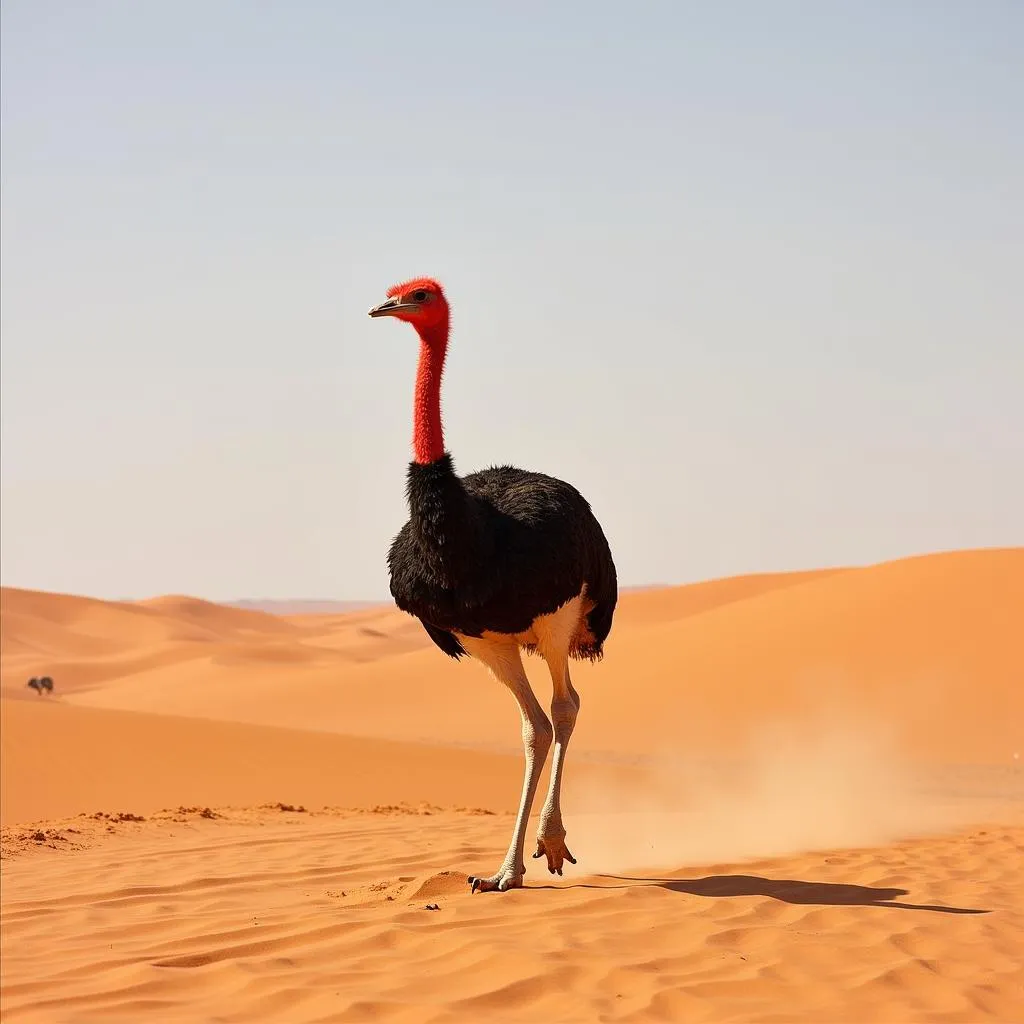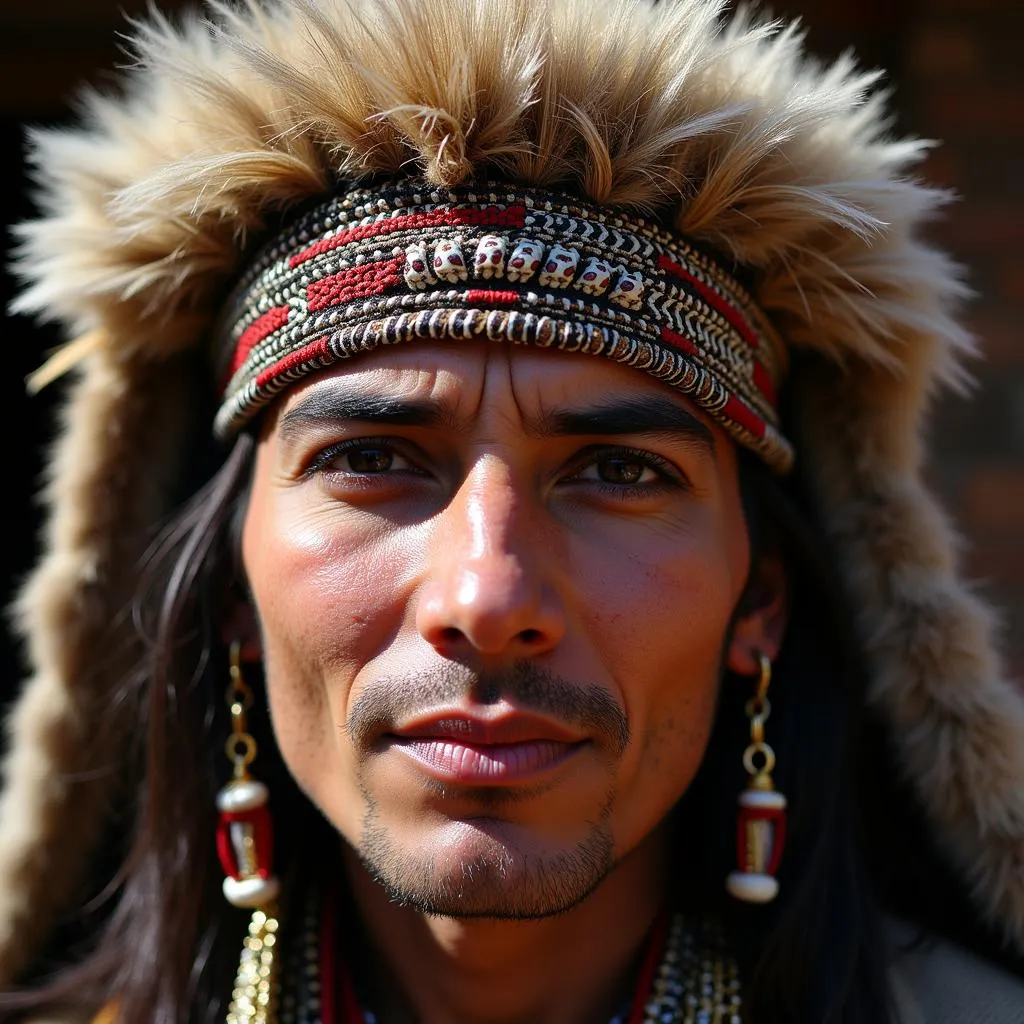The North African Ostrich: A Majestic Icon of the Sahara
The North African Ostrich, also known as the red-necked ostrich, is an iconic bird of the Sahara Desert and the Sahel region. More than just a fascinating creature, the North African ostrich plays a vital role in the ecosystem and holds cultural significance for the people of North Africa.
A Bird Unlike Any Other: Physical Characteristics and Adaptations
 North African Ostrich Running
North African Ostrich Running
The North African ostrich stands out with its impressive size. They are the largest living bird species, with males reaching heights of up to 9 feet and weighing up to 345 pounds. Their plumage differs, with males sporting black feathers and a striking red neck and legs, while females have a more muted grayish-brown coloration. These physical features are not just for show; they are directly linked to the harsh environment they call home.
The ostrich’s long legs aren’t just for their remarkable speed, which can reach up to 43 miles per hour; they also serve as powerful defense mechanisms. One kick from those powerful legs can deter predators and even deliver fatal blows.
The Sahara Desert’s extreme temperatures are another challenge these birds have adapted to. Their loose-fitting feathers provide insulation, and their behavior, such as panting and seeking shade during the hottest parts of the day, helps regulate their body temperature.
Lifestyle and Diet of the North African Ostrich
North African ostriches are nomadic birds, constantly on the move in search of food and water. They are primarily herbivores, their diet consisting of seeds, roots, leaves, and flowers found in their arid environment. Interestingly, they also consume insects and small reptiles, adding a source of protein to their diet.
Ostriches are highly social animals, often found in groups called herds. These herds can range in size from a few individuals to over a hundred, providing safety in numbers and increasing their chances of finding food and water.
The North African Ostrich and its Cultural Significance
For centuries, the North African ostrich has held a prominent place in the culture and traditions of the people living alongside it. Their feathers have been used for adornment, featuring in traditional clothing and headdresses.
 Traditional Berber Headdress with Ostrich Feathers
Traditional Berber Headdress with Ostrich Feathers
The eggshells, known for their strength and durability, have been transformed into decorative objects, beads, and even containers for water.
“The ostrich is a symbol of resilience and adaptation,” says Dr. Amina Ben Said, a cultural anthropologist specializing in North African traditions. “Their ability to thrive in such a harsh environment has made them an integral part of the cultural fabric of the region.”
Conservation Status and Threats to the North African Ostrich
Unfortunately, the North African ostrich is currently listed as “Near Threatened” by the International Union for Conservation of Nature (IUCN). Their populations have been declining due to habitat loss, hunting, and the illegal trade of their eggs and feathers.
Efforts are being made to protect this magnificent bird. Conservation organizations are working with local communities to promote sustainable practices, establish protected areas, and raise awareness about the importance of ostrich conservation.
The Future of the North African Ostrich
The North African ostrich, with its unique adaptations and cultural significance, is a testament to the wonders of the natural world. It is our collective responsibility to ensure the survival of this iconic bird for generations to come. By supporting conservation efforts and promoting responsible tourism practices, we can contribute to a future where the North African ostrich continues to thrive in its natural habitat.
FAQs about the North African Ostrich
What is the lifespan of a North African ostrich?
In the wild, North African ostriches can live up to 40-45 years.
Do ostriches really bury their heads in the sand?
No, this is a myth. Ostriches lower their heads to the ground to swallow sand and pebbles, which aid in digestion, or to hide their eggs in shallow nests.
Are North African ostriches dangerous?
While generally not aggressive, ostriches are powerful birds. It is important to observe them from a safe distance and avoid provoking them.
You can find more information about other African animals names A-Z on our website. If you’re interested in learning more about the diverse cultures of Africa, we have articles on topics ranging from African artificial jewellery to African dishes recipes.
For those interested in the Sahara Desert, we have resources including African desert diagrams for drawing and in-depth analyses of its unique ecosystem.
Need help or have questions? Contact our 24/7 customer support team at +255768904061, email us at kaka.mag@gmail.com, or visit us at Mbarali DC Mawindi, Kangaga, Tanzania.

